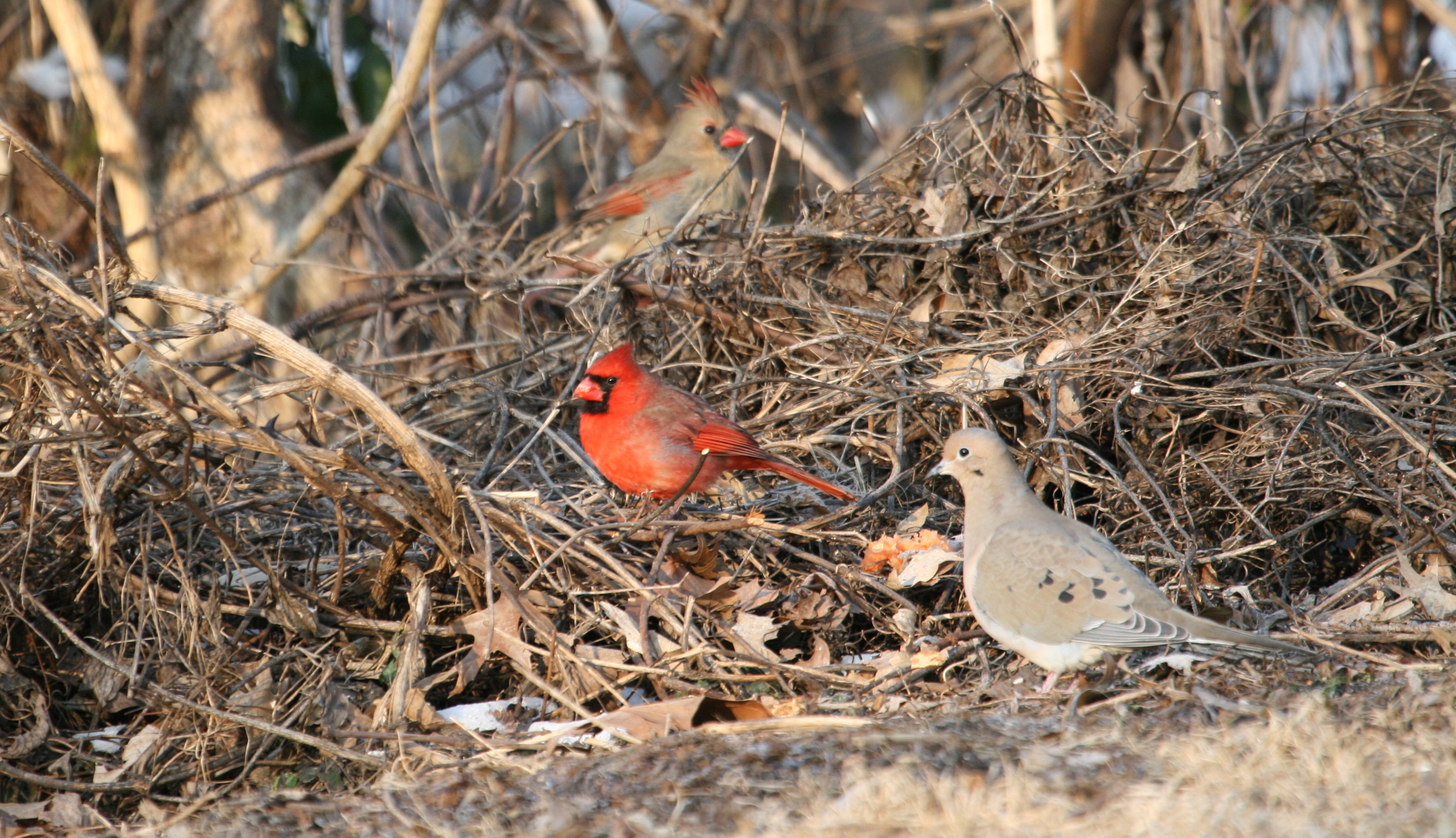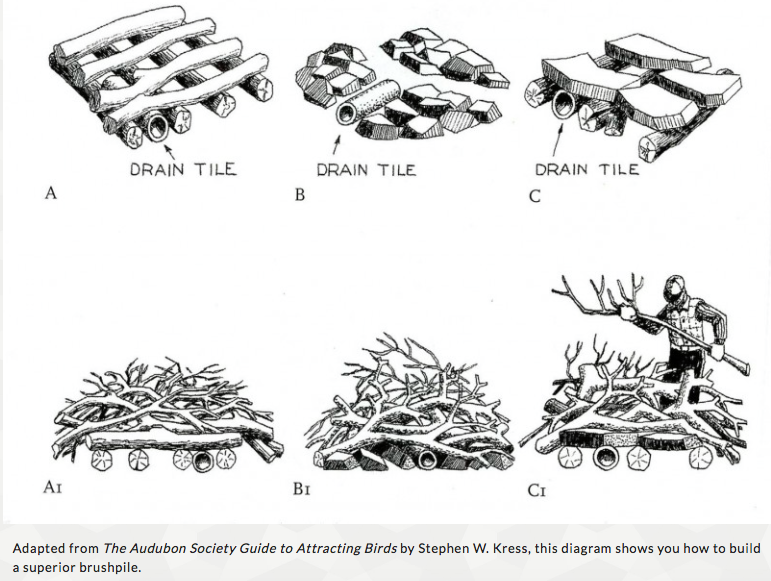As February rolls around, many animals are beginning to become active once again. In the late winter months, though, there is less habitat and less food for the animals. One thing you can do to provide shelter for birds in your backyard is to create a brushpile. In a natural landscape, brush piles happen without any assistance from people. In the woods, storm-felled trees and branches take on new life as havens for birds and wild animals. Toads, salamanders, insects, and spiders live in the tangled brush on the forest floor, creating a smorgasbord of delicacies. Streams at flood stage pile up fortresses of wrecked branches, where waterthrushes, common yellowthroats, catbirds, swamp sparrows, and many other species find shelter and good foraging. We humans live in urban areas with manicured landscapes, which translates into diminished natural habitat and less biodiversity. Creating a brush pile can bring back the environment in your backyard.

How to make a brush pile:
Cut or gather a collection of limbs and branches. Some should be at least four to six inches in diameter. Arrange some of your largest branches parallel on the ground, with space between to create tunnels for larger birds. Any wood will do, but a bottom layer of rot-resistant locust or oak will prolong the brush pile's life. For the second level, place your next largest branches at right angles to the first, log-cabin style. Continue criss-crossing branches to a height of three to five feet. Weave the wood together to make a stable construction. Your pile doesn't have to be perfectly neat. Irregularity provides a matrix of spaces for a variety of species.
As you get to the top, work in smaller material, arranged more densely. Finish with a thick, layered roof of evergreen branches to conceal the interior. In winter, snow will crust on top and form chambers as snug as an igloo. After the holidays, add boughs from discarded Christmas trees for extra insulation. Make your brush pile loose at the outside, so birds can get in easily and quickly. The center should be tighter, to provide small refuges where a bird can escape predators.
Not only will this new habitat shelter present wildlife, it will also attract new wildlife! These natural brush shelters are an excellent environmentally friendly addition to the suburban landscape, since they are made of natural materials. Leaves and other plant matter that catch on the shelter will decompose naturally and return nutrients to the soil (as well as provide food for insects and earthworms). Proper habitats allow wildlife to have safe access to food, and nesting areas, too.

By Nicole Tabit, Clean Water Fellow